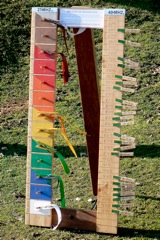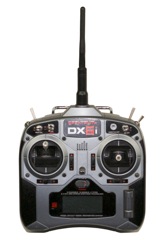
|
|
|
|
RC Frequency GuideGeneral Comments
The increasing use of radio-control equipment operating in the 2.4GHz frequency band means it is much less likely that one member wants to use the same 27MHz or 40MHz frequency as another. However 27MHz and 40MHz transmitters are still used and it is important that the frequency management rules are adhered to. Ready to Run (RTR) models
There are more and more RTR models being marketed, some at very low prices. Most of these operate in the 27MHz or 40MHz band. Where the RC link is crystal controlled the most frequently used frequencies seem to be 27.145Mhz (yellow), 40.665, 40.675, 40.685, and 40.695Mhz. 27MHz and 40MHz - the Frequency Peg Boards
On Club Days, before putting your boat on the water, please ensure that you have selected a frequency peg and replaced it on the peg board with a peg with your name on it (blank pegs are usually available at the pond), also placed the chosen peg on your aerial. remember to swap the pegs back before you leave! (50p fine if you forget!) The pegs on the frequency board are available on a first come, first served basis and are not allocated to members individually. Please try and work with others who may have the same frequency and share the time. You may have access to other frequency chips and can change your frequency in use, it is not a bad idea to have a selection of chips with you. Often other members may be willing to loan chips to ensure everyone can get on the water. Note that some makes of transmitter have a more restricted range of frequency chips available. Users of sets such as HiTec or Futaba (for which all frequencies can be bought) are asked to be considerate to those with more limitted transmitters. Afterall, we are all here to enjoy ourselves and the company of our fellow members. 2.4 GHz transmitters and receivers
These employ fast frequency switching or encoding to prevent interference between different users. A "binding" procedure ensures that receivers only respond to a particular transmitter. Users of 2.4GHz equipment do not need to check who else is using this frequency band. It is easy to tell if a member is using 2.4GHz since the transmitter will have a very short aerial. The photo (right) shows a typical 2.4GHz transmitter. [Back to previous page] |
